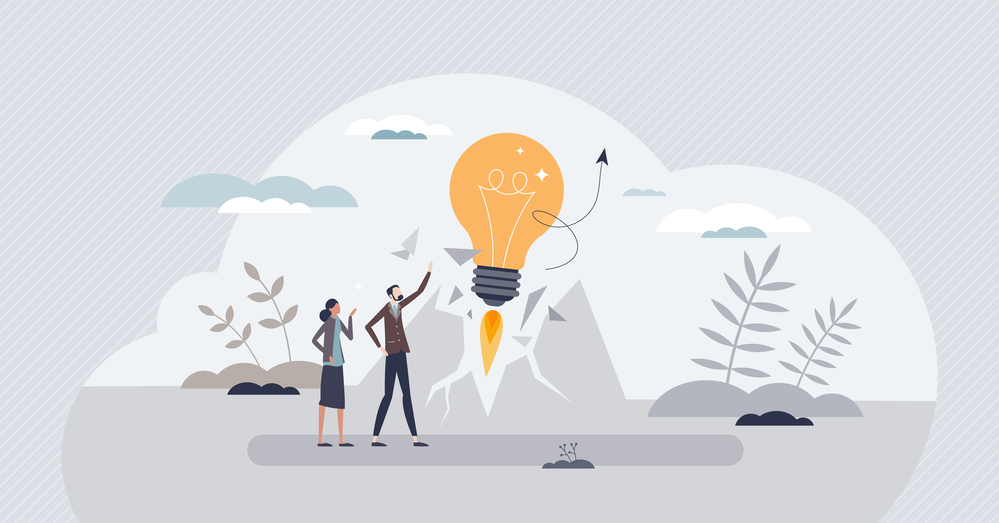Popular and Emerging Innovation Practices on the Gartner Hype Cycle
The Gartner Hype Cycle for Innovation Practices provides a snapshot of emerging and established practices shaping innovation efforts. It highlights the evolution of methods, from established tools and practices like Hackathons, Design Thinking, and Visual Collaboration Applications (like Miro or Mural) to newer concepts like the Minimum Viable Innovation System (MVS), Inclusive Innovation, and Speculative Design. Below, you’ll find a guide to these practices in order of their progression along the cycle (sorted by most mature in time to least mature), with a brief description for each (thanks AI for simplifying and explaining).

- Hackathons
Hackathons are short, intensive collaborative events where teams solve problems, build prototypes, or develop new ideas within a limited timeframe, often fostering creativity and rapid innovation. - Design Thinking
Design Thinking is a human-centered approach to problem-solving that emphasizes empathy, ideation, prototyping, and iteration to create user-focused solutions. - Visual Collaboration Applications
These tools, such as Miro or MURAL, enable teams to brainstorm, collaborate, and plan projects virtually, enhancing teamwork and innovation in remote or hybrid environments. - Design Sprints (Adaptive)
Adaptive Design Sprints are structured processes for tackling complex challenges through ideation, prototyping, and testing, optimized for flexibility based on team and project needs. - Innovation Governance
This practice involves creating policies, structures, and decision-making processes to ensure innovation efforts align with organizational goals and deliver measurable value. - Open Innovation
Open Innovation involves sourcing ideas, knowledge, and expertise from external parties, such as startups, partners, or customers, to enhance internal innovation efforts. - Idea Management Tools
These platforms help organizations collect, evaluate, and prioritize ideas from employees, customers, or stakeholders to streamline innovation processes. - Emerging Technology Radars
These tools track and assess the potential impact of new technologies, helping organizations identify opportunities and risks in their innovation strategies. - Innovation Labs
Innovation Labs are dedicated spaces or teams within organizations designed to foster experimentation, rapid prototyping, and the development of breakthrough ideas. - Innovation Culture Hacks
These are small, strategic interventions aimed at shifting organizational culture to embrace creativity, risk-taking, and a mindset of continuous improvement. - Trendspotting
Trendspotting involves identifying emerging patterns, behaviors, and market shifts to anticipate opportunities and guide innovation efforts. - Lean Startup
Lean Startup is a methodology focused on rapidly building and testing minimal viable products (MVPs) to validate ideas, reduce risks, and ensure market fit. - Tapestry Innovation Ecosystems
These ecosystems integrate diverse stakeholders, technologies, and processes to create interconnected, resilient innovation networks. - Data-Driven Innovation
This approach leverages data analytics, AI, and machine learning to uncover insights, optimize processes, and drive informed decision-making for innovation. - Continuous Foresight
Continuous Foresight involves ongoing scanning of trends, technologies, and market developments to anticipate future changes and opportunities. - Innovation Centers of Excellence
These centers act as hubs for innovation expertise, providing frameworks, tools, and resources to accelerate and sustain innovation efforts across the organization. - Moonshot Thinking
Moonshot Thinking encourages ambitious, transformative goals that may seem impossible but have the potential to drive groundbreaking innovations. - Democratized Innovation
This approach empowers individuals across all levels of an organization to contribute ideas and participate in innovation initiatives. - Pre-typing
Pre-typing is the process of testing an idea’s feasibility with minimal investment by creating early, simplified versions before committing to full-scale development. - LEGO Serious Play
LEGO Serious Play uses LEGO bricks as a hands-on tool to facilitate creative problem-solving, strategic thinking, and team-building activities. - Business Model Innovation
This involves rethinking and redesigning the foundational structure of how an organization creates, delivers, and captures value. - Innovation Framework
Innovation Frameworks provide structured approaches for managing and scaling innovation, integrating processes, tools, and strategies. - Company Builder
A Company Builder is an entity that creates and launches new businesses by leveraging existing resources, expertise, and infrastructure. - Chief Innovation Officer
The Chief Innovation Officer is a senior leader responsible for driving innovation strategies and fostering a culture of creativity and experimentation. - Lead User Method
This method identifies advanced users who face unmet needs and collaborates with them to co-create innovative solutions. - AI-Driven Innovation
AI-Driven Innovation uses artificial intelligence technologies to enhance idea generation, product development, and decision-making. - Effectuation
Effectuation is an entrepreneurial mindset that focuses on leveraging available resources and adapting to evolving circumstances to drive innovation. - OKR for Innovation
OKRs (Objectives and Key Results) for Innovation help align innovation goals with measurable outcomes to track progress and success. - Insight Collection
This involves gathering data and feedback from customers, employees, and markets to inform and guide innovation strategies. - Speculative Design
Speculative Design explores hypothetical futures through prototypes and narratives to spark discussions and inspire new possibilities. - Inclusive Innovation
Inclusive Innovation ensures that innovation processes and outcomes benefit all stakeholders, particularly underrepresented or marginalized groups. - MVS: Minimum Viable Innovation System
MVS focuses on establishing the simplest set of processes and tools needed to enable and sustain innovation in an organization.
We’ve been helping organizations with innovation practices, initiatives, and programs for 20 years now. We’ve seen many practices emerge (like Generative AI for innovation) and sustain (like design thinking). Contact us for insight or help with your innovation program or initiative.
